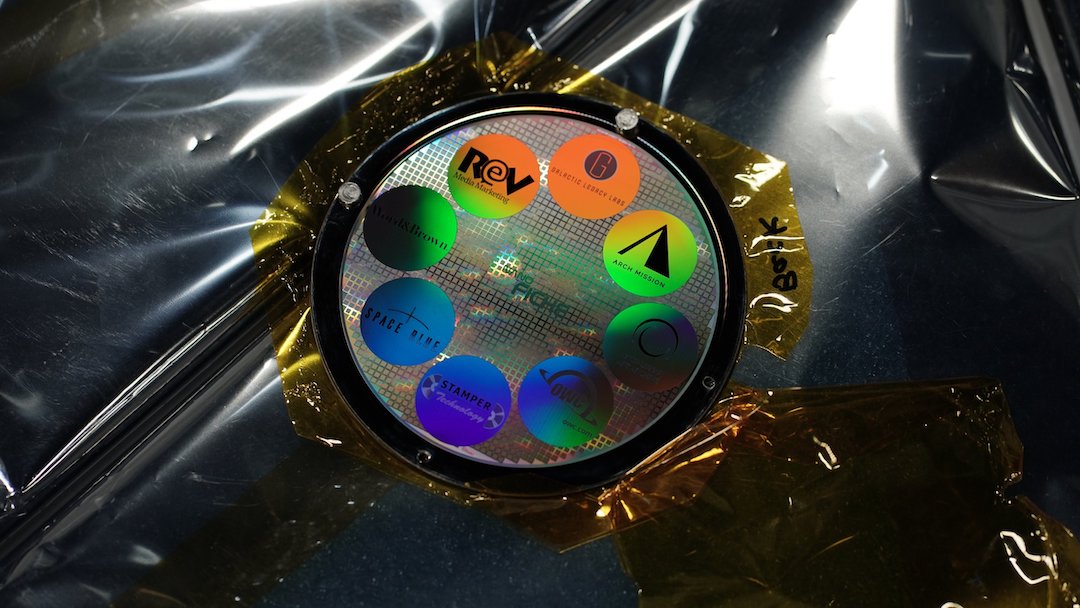A ‘Library’ Opens On The Moon To Aliens & Future Humans For Next 5 Billion Years
By Mikelle Leow, 15 Apr 2024

Image via Arch Mission Foundation
On February 22, 2024, the moon became the official home to the Galactic Legacy Archive, a comprehensive collection courtesy of Intuitive Machines, launched via SpaceX. This ambitious project doesn’t just shoot for the stars—it lands among them, providing a repository of human culture on our lunar neighbor.
Dubbed a “nanofiche artifact,” this lunar library comprises 16 layers of nickel etchings and digital data, all in a disk you can hold in your hand. It holds an eclectic and extensive mix of content, including the entirety of the English Wikipedia, and the Panlex data sets. The SETI Institute’s Earthling Project, the Arch Mission Private Library, David Copperfield’s trove of magic secrets, and the Arch Lunar Art Archive also grace this celestial collection, though it notably excludes any biological specimens like DNA or tardigrades.
Storing more than just books, the Galactic Legacy Archive encapsulates over 30 million pages, 25,000 songs, and a wealth of art, making it a treasure trove of human achievement. The archive further contains over 77,000 multimedia digital artifacts known as ‘Lunagrams’, curated by the innovative Space Blue company. These Lunagrams provide a panoramic view of human culture, spanning a breathtaking 30,000 years.
Contributions to this grand archive come from numerous sources, ensuring a broad spectrum of human knowledge and creativity is represented. The Arch Mission Foundation has significantly enriched the library with a diverse range of content, all languages cataloged by the Rosetta Project to internet lore and seminal works of literature accessible through Project Gutenberg.
Interestingly, Mashable highlights that the archive additionally encompasses the earliest art from Earth and thousands of novels from various epochs and genres—such as Harry Potter, The Foundation Trilogy, Lord of the Rings, and Dune. Yet, despite its expansive content, no items from this vast collection can be physically checked out. The works are etched into thin nickel layers, requiring a microscope to read. The scaled encoding extends to a significant portion of the archive’s digital content, including music and images, necessitating a primer on nickel-etched digital encoding to access them.

Photo 186334625 © Wachiwit | Dreamstime.com
The archival method—nanofiche in nickel—is designed for durability. Developed to withstand not only the harsh conditions of space but also the potential devastation of a nuclear war on Earth, this method ensures that the content could feasibly endure for billions of years.
Nova Spivack, the visionary head of the Arch Foundation, has heralded this project as a monumental step in preserving civilization. As he puts it, “We can now say for the first time in history that civilization will not be lost.”
The technology ensures that the archive, and thereby the breadth of human knowledge, could potentially last as long as the moon orbits Earth—estimated to be around five billion years. Spivack’s broader plan doesn’t end with the moon; the foundation aims to pepper the Earth and solar system with these archives, ensuring redundancy in the preservation of our global heritage.
[via Mashable and Arch Mission Foundation, images via various sources]





